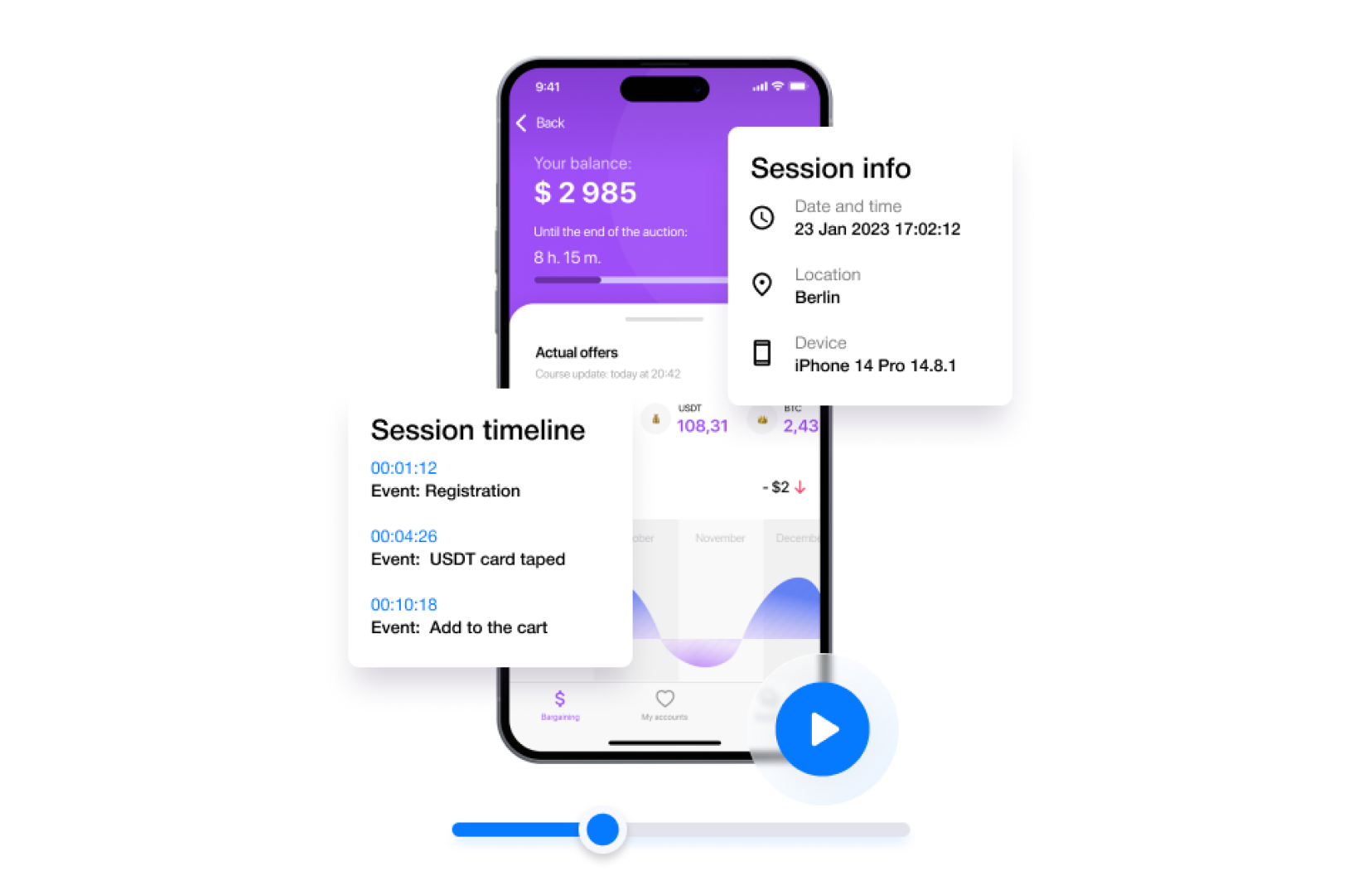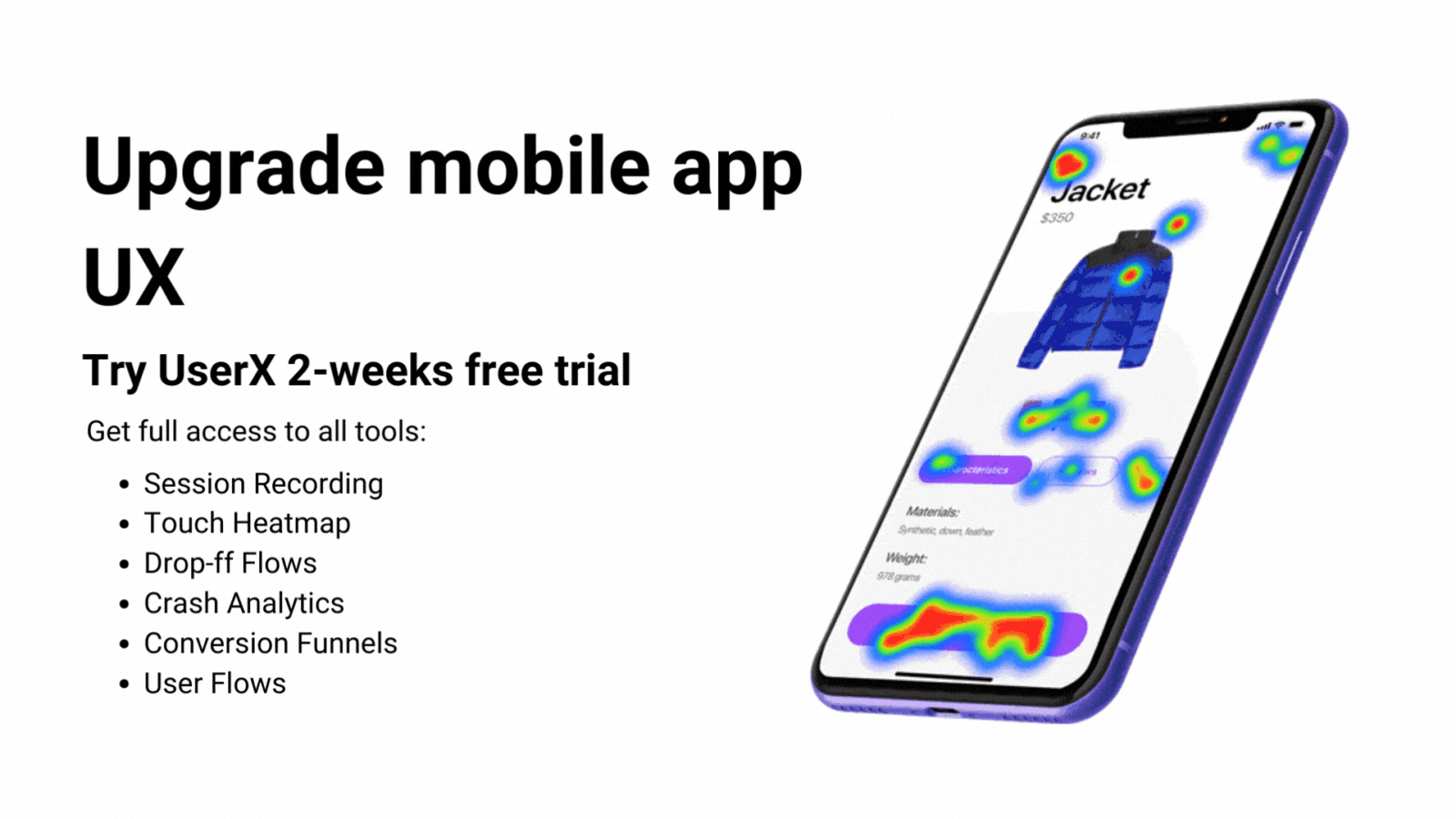Introduction
In the rapidly evolving world of technology, the user experience (UX) of mobile apps has become a cornerstone of success in the digital marketplace. As mobile devices continue to be an integral part of our daily lives, the UX of mobile apps plays a pivotal role in determining their usability, appeal, and overall user satisfaction. A well-designed mobile app UX is not just about aesthetic appeal; it's about creating an intuitive, efficient, and enjoyable journey for the user. This is where IT professionals and developers can make a significant impact. By focusing on the intricacies of mobile app UX, they can transform a mere app into an engaging and user-friendly experience. In this exploration, we will delve into the various facets of mobile app UX, highlighting its importance in the current landscape of mobile apps, and how it can be a game-changer in the competitive world of app development.
Understanding Mobile UX
Mobile User Experience (UX) refers to the overall experience a user has when interacting with a mobile app. This encompasses everything from how the app feels in their hands to how easily they can accomplish their desired tasks. In the IT industry, mobile UX holds a paramount place due to the sheer volume of users accessing services through mobile devices. A well-crafted mobile UX goes beyond just good looks; it's about the seamless integration of utility, usability, and aesthetics.
In this context, mobile UX is not limited to just the user interface (UI); it's a broader concept that includes UI but extends to all aspects of the app experience. This includes the design, the responsiveness, the intuitiveness of navigation, and how well the app meets the user's needs. In the world of IT, where technology is ever-evolving, a focus on mobile UX/UI is crucial. It's not just about making apps that work; it's about creating apps that provide a delightful and intuitive experience.
The significance of mobile UX in IT cannot be overstated. In an era where user satisfaction can make or break an app, the role of UX is central. A good UX can lead to higher user retention, increased engagement, and ultimately, the success of the app in a highly competitive market. As such, understanding and implementing effective mobile UX practices has become an essential skill for IT professionals and developers alike.

Best Practices in Mobile UX Design
In the realm of mobile app development, adhering to best practices in UX design is crucial for creating apps that are not only visually appealing but also highly functional and user-friendly. These best practices are guided by a set of design principles that prioritize the user’s experience above all else.
One fundamental principle is simplicity. Mobile UX should be straightforward and intuitive, avoiding unnecessary complexity that can frustrate users. This means designing an interface that is clean and uncluttered, with clear calls to action and easy navigation. Users should be able to achieve their goals with minimal effort and confusion.
Another key aspect is consistency. Consistency in design elements such as colors, fonts, and button styles helps create a cohesive and familiar experience for the user. This extends to the behavior of the app as well; similar actions should result in similar outcomes, reinforcing the user’s understanding of the app’s functionality.
Responsiveness is also vital. Mobile devices come in various sizes and capabilities, and a good mobile UX design ensures that the app functions smoothly across different devices. This involves designing flexible layouts that adapt to various screen sizes and orientations, ensuring a seamless experience regardless of the device used.
Personalization is an increasingly important factor in mobile UX. Tailoring the user experience to individual preferences and behaviors can significantly enhance engagement. This could mean allowing users to set preferences in the app or designing adaptive interfaces that change based on user behavior.
Accessibility should not be overlooked. Designing for accessibility means ensuring that the app is usable by people with a wide range of abilities and disabilities. This includes considerations like color contrast for visibility, voice commands for hands-free use, and screen reader compatibility.
Finally, feedback is a critical component of good UX design. Users should receive immediate and clear feedback in response to their actions. Whether it’s a visual cue to indicate a successful action or an error message that helps rectify a mistake, timely feedback helps users understand the app better and feel more in control.
In conclusion, mobile UX best practices are centered around creating a user-friendly, accessible, and enjoyable experience. By adhering to these design principles and focusing on the user’s needs, developers can create mobile apps that are not only functional but also a delight to use.
The Anatomy of a Great Mobile App UX
Delving into the anatomy of a great mobile app UX, we uncover the essential elements that define the excellence of UX design for mobile apps. It’s a blend of art and science, where understanding user behavior, preferences, and technological constraints come together to form a harmonious user experience.
The first element is user-centered design. This approach places the user at the heart of the UX design process. Every decision, from the layout to the functionality, is made with the user's needs in mind. In mobile app UX design, this means creating interfaces and experiences that are not only aesthetically pleasing but also functional and easy to navigate.
Another crucial aspect is the information architecture of the app. This involves organizing content and features in a way that is logical and easy to understand. Users should be able to find what they're looking for without confusion or frustration. A well-structured information architecture is the backbone of any successful mobile app UX design.
Interactivity is also key. A mobile app should be interactive and engaging to keep users interested. This includes using animations and transitions to guide users through the app and provide feedback on their actions. However, it’s important to balance creativity with usability, ensuring that these elements enhance rather than detract from the overall experience.
Adherence to mobile app UX guidelines is essential. These guidelines, provided by platforms like iOS and Android, offer a framework for creating apps that are not only consistent with the operating system but also intuitive for users familiar with those environments. Following these guidelines ensures that the app feels native to the device, which is crucial for user comfort and satisfaction.
Lastly, testing and iteration play a pivotal role in UX design for mobile apps. Continuous user testing and feedback help identify areas for improvement. The best mobile app UX designs are the result of iterative design processes where feedback is constantly sought and incorporated. This ensures that the app evolves in line with user expectations and technological advancements.
In summary, the anatomy of a great mobile app UX involves a deep understanding of user needs, adherence to structured guidelines, and a commitment to continuous improvement. By focusing on these elements, UX designers can craft mobile experiences that are not only visually appealing but also highly functional and user-friendly.

Leveraging Design Trends in Mobile App UX
Keeping pace with the latest design trends is crucial in mobile app UX to ensure an app remains relevant, engaging, and user-friendly. These trends reflect the evolving preferences and behaviors of users, as well as advancements in technology. Understanding and incorporating these trends into mobile design can significantly enhance the user experience.
One notable trend is the shift towards minimalism. This design philosophy emphasizes simplicity, clean lines, and a clutter-free interface. In mobile design, minimalism translates to more straightforward navigation and less cognitive load for the user. It’s about stripping away the non-essential elements to focus on what truly matters to the user, enhancing both the aesthetic appeal and functionality of the app.
Another trend is the use of bold and expressive colors. While minimalism focuses on simplicity, the color palettes have become more daring. Bright, vibrant colors can make an app more visually appealing and memorable. When used strategically, these colors can guide users’ attention to important elements and actions within the app.
In addition, there’s a growing emphasis on personalization in mobile design. Personalized UX tailors the app experience to individual users, making it more relevant and engaging. This can range from customized content and recommendations to adaptive interfaces that change based on user preferences and behaviors.
Responsive and adaptive design continues to be a key trend. As mobile devices vary greatly in size and capabilities, mobile apps must adapt seamlessly to different screen sizes and orientations. This ensures a consistent and functional experience across all devices.
Incorporating these design trends into mobile app UX requires a balance. While it’s important to stay current, it’s equally crucial to ensure that these trends align with the app’s purpose and its users’ needs. By thoughtfully integrating these trends, designers can create mobile apps that are not only aesthetically pleasing but also intuitive and user-centric.
Mobile App UX/UI Integration
The integration of User Experience (UX) and User Interface (UI) in mobile apps is a pivotal aspect of app design, one that can significantly influence the app's success. While often used interchangeably, UX and UI serve distinct roles and, when harmonized effectively, create a seamless and engaging user journey.
UX design focuses on the overall feel of the app, encompassing the user's journey to solve a problem or achieve a goal. It’s about understanding the user's needs and preferences and creating a functional and efficient experience that caters to these requirements. App UX is not just about usability but also about the pleasure and efficiency of the interaction, ensuring that users find value in what the app offers.
On the other hand, UI design is more about the look and layout of the app. It involves designing each screen or page with which a user interacts, ensuring that the UI visually communicates the path laid out by the UX design. This includes the choice of colors, button shapes, typography, and other visual elements. Mobile UX UI is, therefore, a combination of these aesthetic considerations with the functional layout of the app.
The relationship between UX and UI in mobile apps is symbiotic. A visually stunning app (UI) that fails to deliver on functionality and ease of use (UX) will struggle to retain users. Conversely, an app with a great user experience but poor aesthetics will not attract the initial user interest it needs to succeed. The integration of both elements is crucial in creating an app that is not only visually appealing but also intuitive and user-friendly.
Effective mobile app UX/UI integration involves a deep understanding of the users' needs and a careful balance between aesthetics and functionality. By combining these aspects, developers and designers can create mobile apps that are not only visually captivating but also provide a smooth, efficient, and enjoyable user experience.
The Role of Mobile App Development in UX
Mobile app development plays a crucial role in shaping the user experience (UX) of an app. The development process is not just about coding and technicalities; it's also about realizing the vision of the UX design. The way an app is developed can significantly impact how users interact with it and how they perceive its value.
One of the key aspects of mobile app development that affects UX is performance optimization. Users expect mobile apps to be fast, responsive, and reliable, regardless of the device they use. Developers must focus on optimizing load times, ensuring smooth transitions, and providing a stable experience across different devices and operating systems. This technical finesse directly contributes to a positive user experience.
Moreover, the development process must be aligned with the principles of designing for mobile. This includes understanding the limitations and capabilities of mobile devices, such as smaller screen sizes and touch-based interactions. Developers need to work closely with UX/UI designers to ensure that the app’s functionality and design are seamlessly integrated and that the app is optimized for mobile use.
Accessibility is another important factor in mobile app development. Ensuring that the app is accessible to all users, including those with disabilities, is vital. This means incorporating features like voice-over text, adjustable text sizes, and color contrast options. An accessible app not only broadens its user base but also demonstrates a commitment to inclusive design.
In conclusion, mobile app development is integral to delivering a high-quality user experience. It requires a collaborative effort between developers and designers to ensure that the technical execution aligns with the UX vision. By focusing on performance, mobile optimization, and accessibility, developers can significantly enhance the overall UX of the app.

Case Study – UserX Service Analysis
UserX emerges as a prominent player in the domain of mobile app UX, offering a comprehensive suite of analytics tools tailored to enhance the user experience in mobile apps. As a growth-oriented solution, UserX.pro is designed to provide in-depth insights for mobile app teams, aiding in the optimization of app performance and user satisfaction.
One of the key features of UserX.pro is its focus on customer journey analysis. This aspect is crucial in understanding how users navigate through the app, revealing potential pain points and areas for improvement. Additionally, the platform’s ability to pinpoint specific issues users encounter, such as difficulties in completing purchases, is instrumental in refining the mobile app UX. By utilizing session recordings and touch heatmaps, UserX enables developers to identify why users fail to complete conversions, thereby helping to address interface and technical errors to boost app revenue.
Session recordings provided by UserX.pro offer a window into user behavior, allowing developers to observe how users interact with the app. This feature is invaluable in understanding why certain actions do not meet expectations and which interface elements resonate most with users. UserX’s advanced filters and funnels further streamline this process, ensuring that only the most relevant user interactions are analyzed, thus enhancing the mobile app UX design.
Moreover, the platform's heatmaps and conversion funnel analytics empower developers to determine at which stages users are dropping off and identify the reasons for churn. This insight is essential for addressing specific problems in user scenarios, ultimately leading to increased revenue.
Lastly, UserX’crash replay feature is notable for its efficiency in identifying and reproducing technical errors. By facilitating quicker fixes to technical bugs, it ensures a smoother and more reliable mobile app UX.
In summary, UserX stands out as a sophisticated tool in the realm of mobile app design, offering a range of features that significantly enhance mobile app UX design. Its capabilities in analytics, user behavior observation, and problem-solving contribute immensely to creating more user-centric and successful mobile apps.

Conclusion
The exploration of mobile app UX in this article underscores the multifaceted nature of designing engaging and effective mobile apps. From understanding the essence of mobile UX, adhering to best practices, and integrating UX/UI design, to considering the impact of development processes and leveraging tools like UserX.pro, each aspect contributes significantly to the user experience. The future of mobile app UX lies in continuously evolving with technological advancements, user expectations, and design trends, ensuring that apps not only meet but exceed the demands of an increasingly digital world. As technology progresses, the focus on innovative, user-centered design will be more crucial than ever in defining the success of mobile apps.
FAQs on Mobile App UX/UI Design
- What is Mobile UX and How Does it Affect App Success?
- Mobile User Experience (UX) refers to how a user interacts with and experiences a mobile application. A good mobile UX is crucial for app success as it enhances user satisfaction, increases engagement, and improves retention rates.
- Can You Explain Mobile UX Best Practices?
- Mobile UX best practices include designing for simplicity, ensuring consistency across the app, optimizing for performance, and focusing on user-centered design. These practices help in creating a more intuitive and enjoyable user experience.
- What Are the Guidelines for UX Design for Mobile Apps?
- Guidelines for UX design in mobile apps involve focusing on user needs, maintaining a balance between aesthetics and functionality, ensuring easy navigation, and optimizing for different device sizes. Following these guidelines helps in creating apps that are both user-friendly and efficient.
- How Important is Mobile UX UI Integration in App Design?
- Mobile UX UI integration is vital in app design as it ensures a seamless blend of aesthetics (UI) and functionality (UX). This integration is key to creating an app that is not only visually appealing but also easy and efficient to use.
- What Role Does Mobile App Development Play in Enhancing UX?
- Mobile app development plays a significant role in enhancing UX by implementing the design effectively, optimizing app performance, ensuring responsiveness across devices, and integrating user feedback for continuous improvement.



